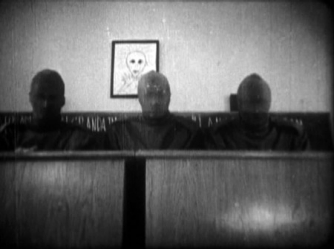The Seal was the second short that Dušan Makavejev (b. 1932) made as an amateur filmmaker and member of the Belgrade Cinema Club (Kino Klub Belgrade), which in the early 1950s brought together Serbian avant-gardist amateurs who wanted to abandon both the academic rules of filmmaking and the influence of the Russian and French avant-gardes, especially surrealism.[1] In this early film, a certain amount of surreality remains (as it does in later Makavejev films), but the filmmaker also shows a strong inclination toward satire and political provocation, along with a talent for visually capturing the absurd and the paradoxical.[2]
Influenced by Slavko Vorkapić’s and Robert Foley’s The Life and Death of 9413, a Hollywood Extra (1928), in its 17 minutes, The Seal tells the entire life story of a man who lives in an unnamed repressive society. The story is Kafkaesque: it is narrated by the man after his death, which he seems to welcome, while the intertitles use a language Makavejev himself invented. It also possesses a number of expressive visual motifs, such as the seals that faceless (literally) authority figures use throughout the film to mark the milestones of the protagonist’s life (such as birth, marriage, and death) on his body. Later, Makavejev described the film as his “first film against the invisible power certain people have over others, against bureaucracy,"[3] and because of the way the film avoids specifying a particular dramatic time and place, its message remains as powerful today as ever, giving viewers the ability to project their anxieties about the present state of the world onto the screen. — Diana Nenadić
With thanks from the series organizers to Aleksandar Erdeljanović, Head of the Archive, as well as Aleksandra Savić and Snežana Dragović at the Yugoslav Film Archive (Jugoslovenska Kinoteka), Belgrade, for making a screening of this film possible in Washington and to Miodrag Milošević, Head of the Academic Film Center at the Student City Cultural Center (Akademski Filmski Centar Dom Kulture Studentski Grad), Belgrade, for his assistance with our research of this film.


